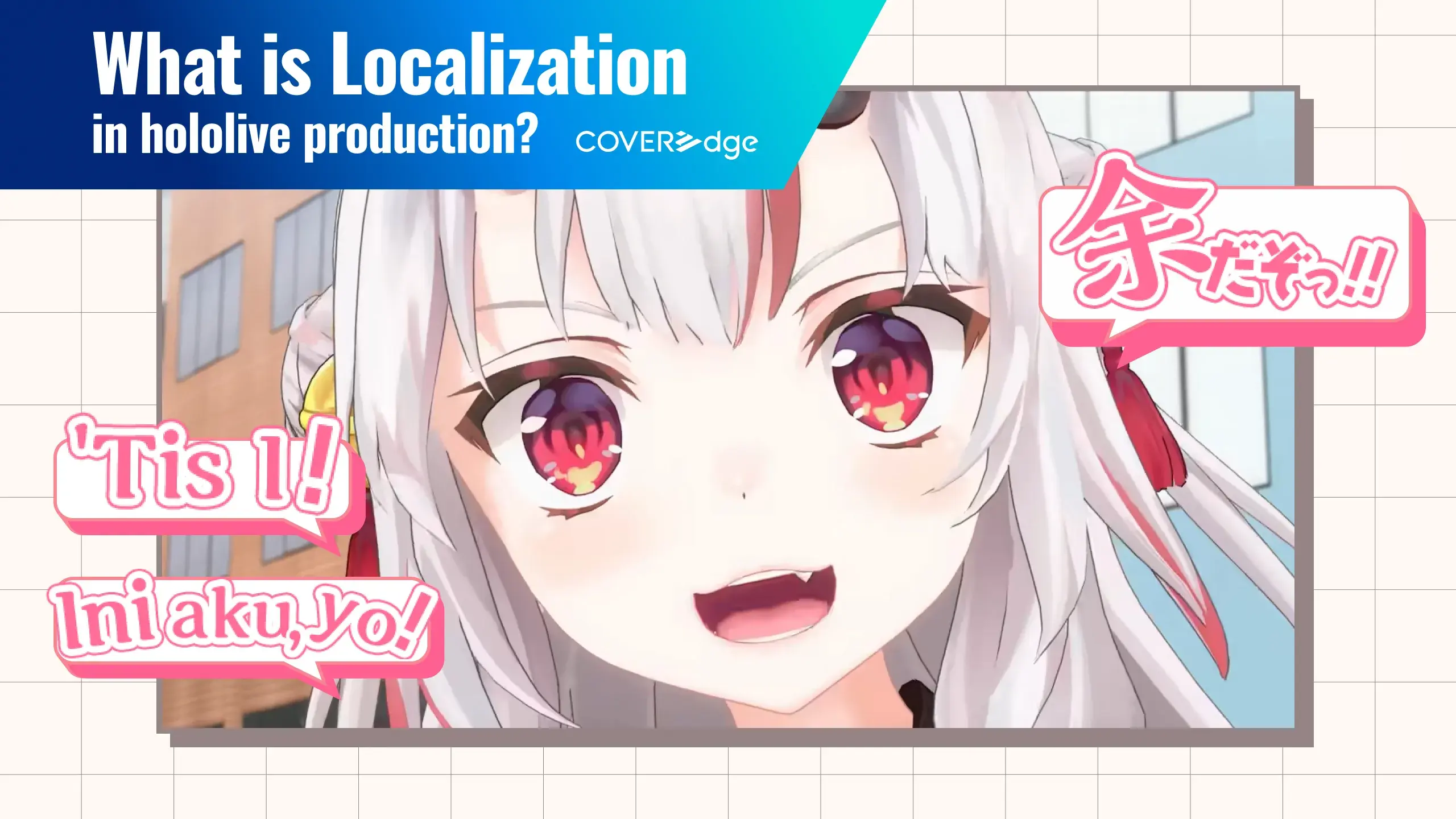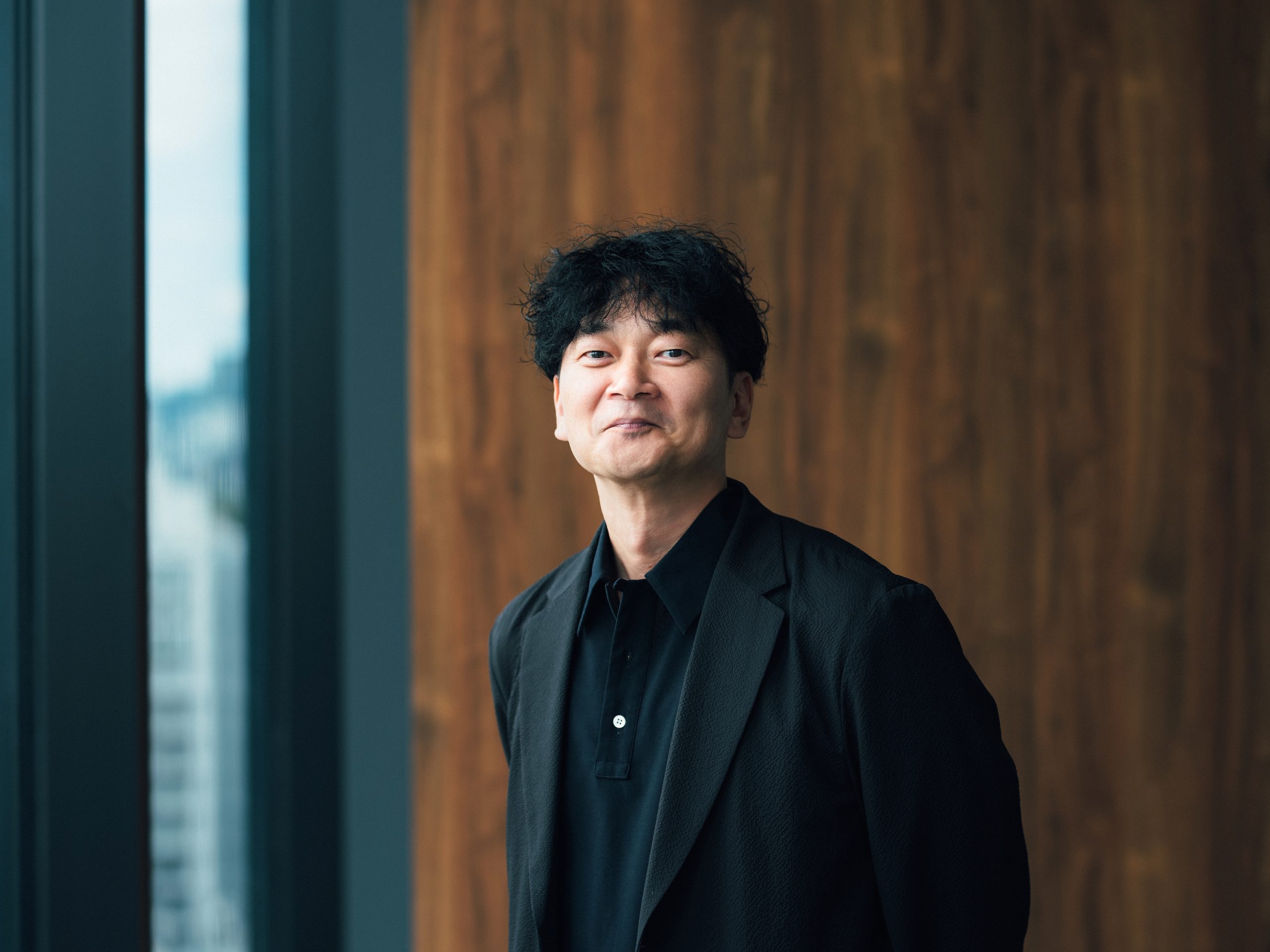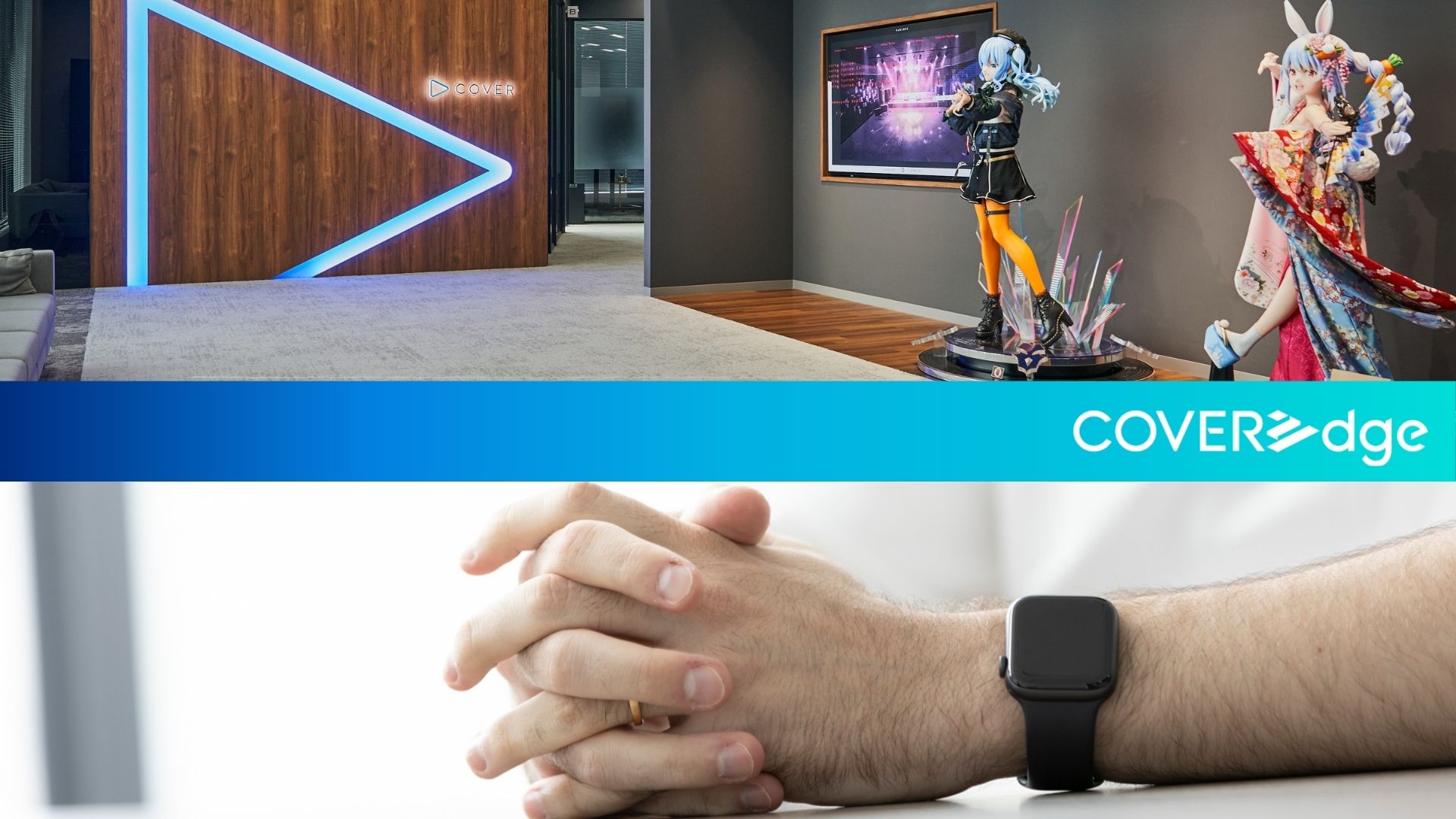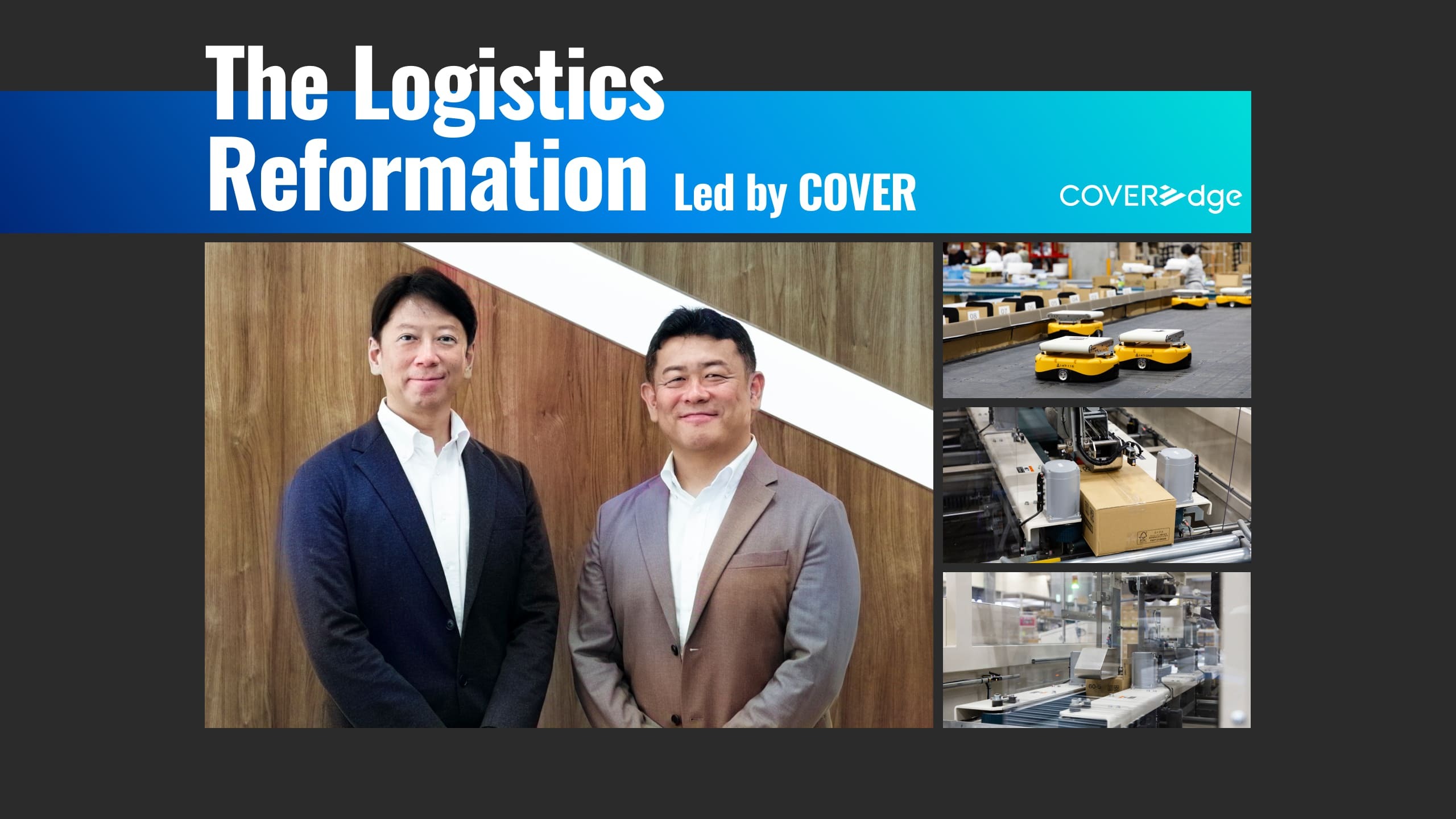
Shigeaki Hayashi joined COVER Corporation in 2022 after serving as the head of console gaming and working as an art director at a social gaming company. He currently serves as the Head of the Creative Production Department and was appointed Senior Vice President in April 2025. Shigeaki Hayashi now oversees VTuber production, including the Creative Production Department and the Talent Management Department.
Since joining the company, Mr. Hayashi has overseen the Creative Production Department, which is responsible for creative production related to hololive production. The department includes staff and creators - such as illustrators, engineers, directors, and technical staff - who continue to push the boundaries of VTuber expression with their diverse area of expertise.
The Creative Production Department has built an environment where creative assets - the “weapons” of our talents - can be generated quickly, while also incorporating the latest technologies such as Unreal Engine for the development of next-generation live performances. In this article, we take a closer look at the production side of things, where six specialized teams unite to take on the challenge of creating new forms of entertainment.
A seamless production system run by six specialized teams: the power of creativity driven by a professional organization
ー Could you tell us about the specific areas covered by the Creative Production Department and your role?
The Creative Production Department is made up of a wide range of staff. We have artists, engineers, project management staff, studio technical staff, and live broadcast directors, along with the Production Promotion Division, which focuses specifically on project management. Our team provides strong creative support for our talents while also handling all aspects of production needed for streaming, all under one roof. The Production Promotion Division plays a key role in bridging all the different teams and keeping projects moving forward.
Right now, we handle around 1,000 projects a year – both big and small, and covering all production-related work within the company. Our responsibilities are wide-ranging – from building production frameworks and setting creative direction to managing team members, planning and executing budgets, and coordinating with other departments and external partners. Ultimately, our mission is to create an environment where we can collaborate smoothly with our talents through all of these efforts.
ー How has the team changed since you first joined the company?
When I first joined, the division was made up of about 50 members, consisting mainly of illustrators and production coordinators. At that time, we primarily focused on designing costumes and creating key visuals by working closely with external creators. Later, the CG Production Division, which had been under the supervision of our CTO, Mr. Fukuda, was transferred to our division, and from there, the organization began to grow. Starting with the Illustration Production Division, we gradually brought together teams from the Production Promotion Division, the Computer Graphic Production Division, the Livestream Technology Division, the Livestream Planning Division, the Technology Development Division, all of which had previously operated separately. Since joining in May 2022, I’ve seen the division grow at an incredible pace, expanding dramatically over just two and a half years.
We’ve also worked to build a structure that lets us flexibly meet different needs, combining collaboration with external creators with a stronger in-house team. Especially for illustration work, we used to rely mostly on external creators, but by actively hiring more in-house illustrators, we’ve been able to handle more of the work internally. Today, for example, we have a flexible system where we might outsource character design to external creators while having our in-house staff handle production support.
ー Could you introduce the different divisions within the Creative Production Department?
The Creative Production Department is made up of six main divisions.
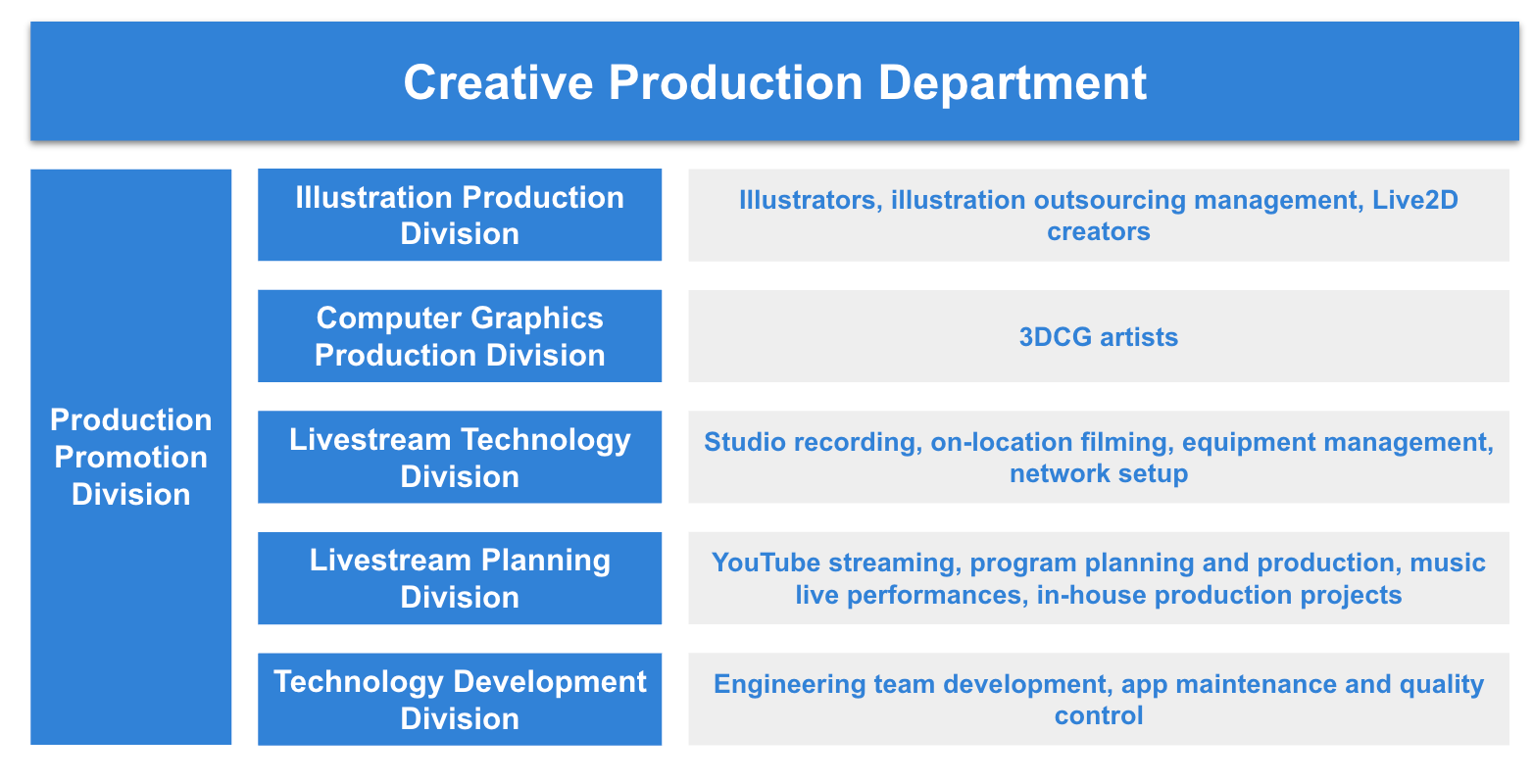
First, the Illustration Production Division is made up of around 20 young staff members who are responsible for designing costumes and creating key visuals. In their personal time, many of them are actively engaged in creative activities, such as sharing their artwork on social media and participating in UGC culture.
The Computer Graphic Production Division consists of 3D character and background designers and technical artists, along with creators with strong craftsmanship skills. Many of the team members have experience in game development, and the team features a wide range of experience levels from young professionals to veterans.
The Production Promotion Division is responsible for project management and livestream operations. The team is made up of diverse members from various backgrounds – including former YouTubers and global talent – who work together to drive the project forward.
The Livestream Technology Division is responsible for technical supervision, filming, sound, application management, and motion capture. The division is made up of many members who approach studio maintenance, equipment management, and recording with the utmost dedication and care.
The Livestream Planning Division handles production planning, the creation of variety shows and music live events, and the production of streaming assets. The team includes many specialists in online streaming, particularly on platforms like YouTube, and is made up of youthful, energetic members who are actively driving projects forward.
The Technology Development Division is made up of developers, quality control specialists, and art engineers. While many of the members come from the gaming industry, the team also includes members with extensive knowledge in AR and VR technologies. Their work covers a wide range of areas, including developing and maintaining apps for talents and studio operations, enhancing the functionality of studio apps, and creating special effects and features used in livestreams.
Turning creative passion into a true asset: building a production system that prioritizes speed
ー It seems that the Creative Production Department handles everything from creating illustrations and models for talents to producing shows, but could you walk us through the specific processes?
For the talents of hololive production, creative assets are truly their “weapons,” and we’re always eager to provide them with new ones as quickly as possible. With that in mind, throughout the production process, we focus on responding to talents’ requests promptly and delivering high-quality results without delay. When it comes to the production of shows including performance direction and costume design, we place a strong emphasis on discussions with the talents. We often hold meetings while sketching ideas on the spot, and there are also times when our in-house staff actively brings forward their own proposals. It typically takes about two to three months to produce various assets, while show production – from planning to livestreaming – usually takes around four to six months.
In terms of quality control, we work to improve the quality of our deliverables through weekly review meetings and full team settings held every two months. We also stay on top of trends and needs by conducting surveys with talents and closely monitoring industry developments. Through these efforts, we stay mindful of both the talents’ and creators’ perspectives, focusing on what will make fans happy and what they truly want as we shape our creative direction.
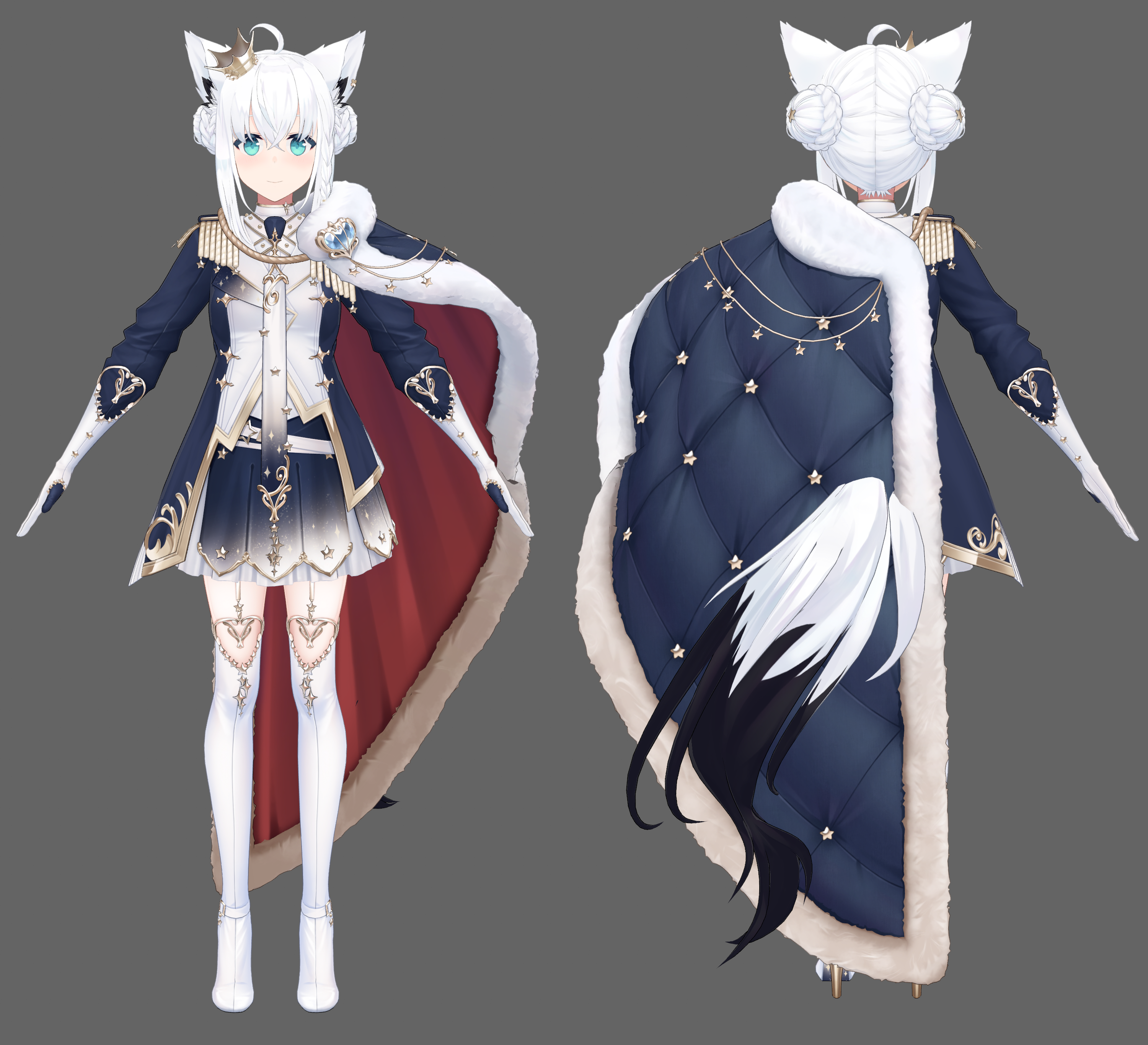 | 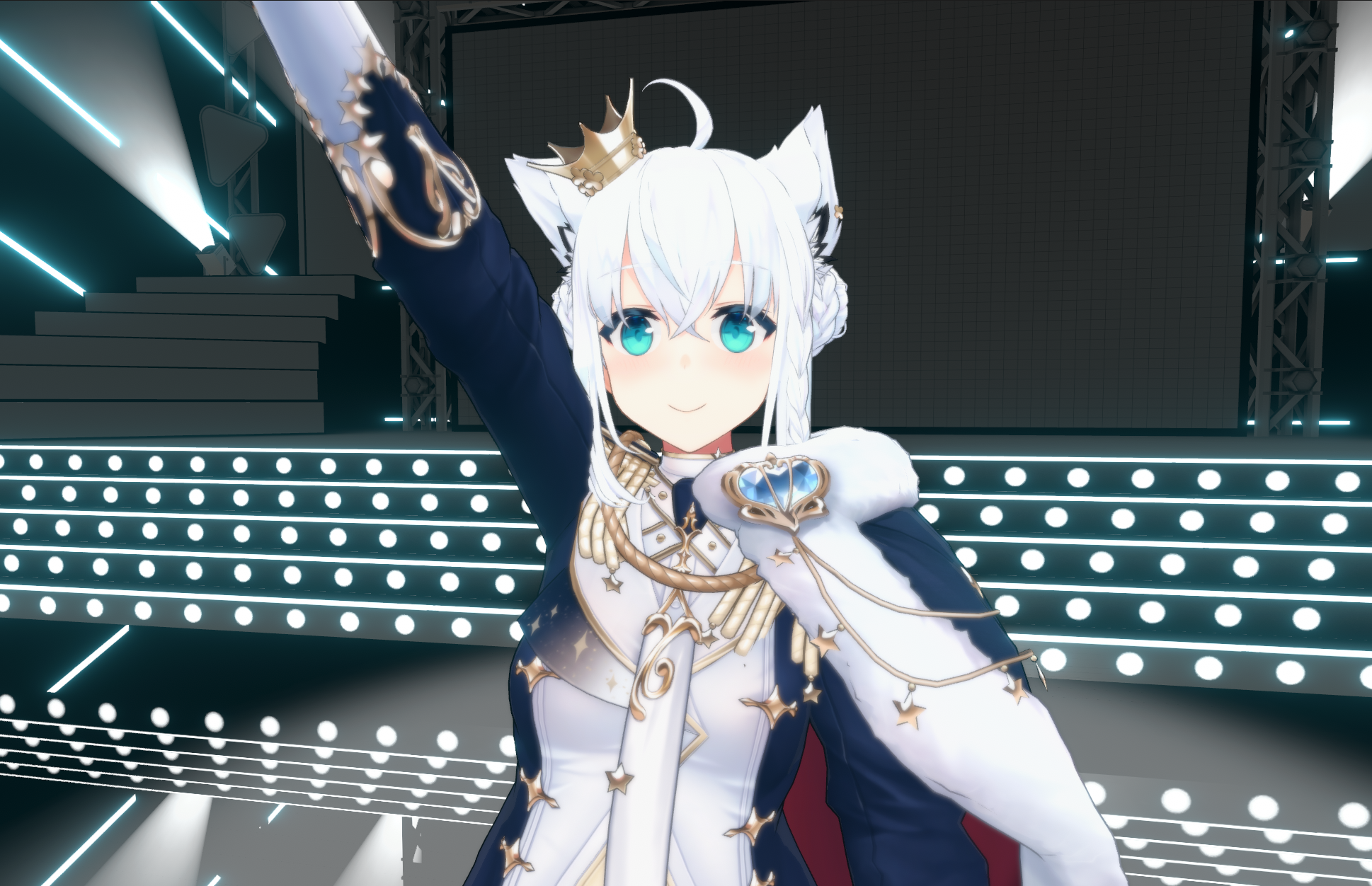 |
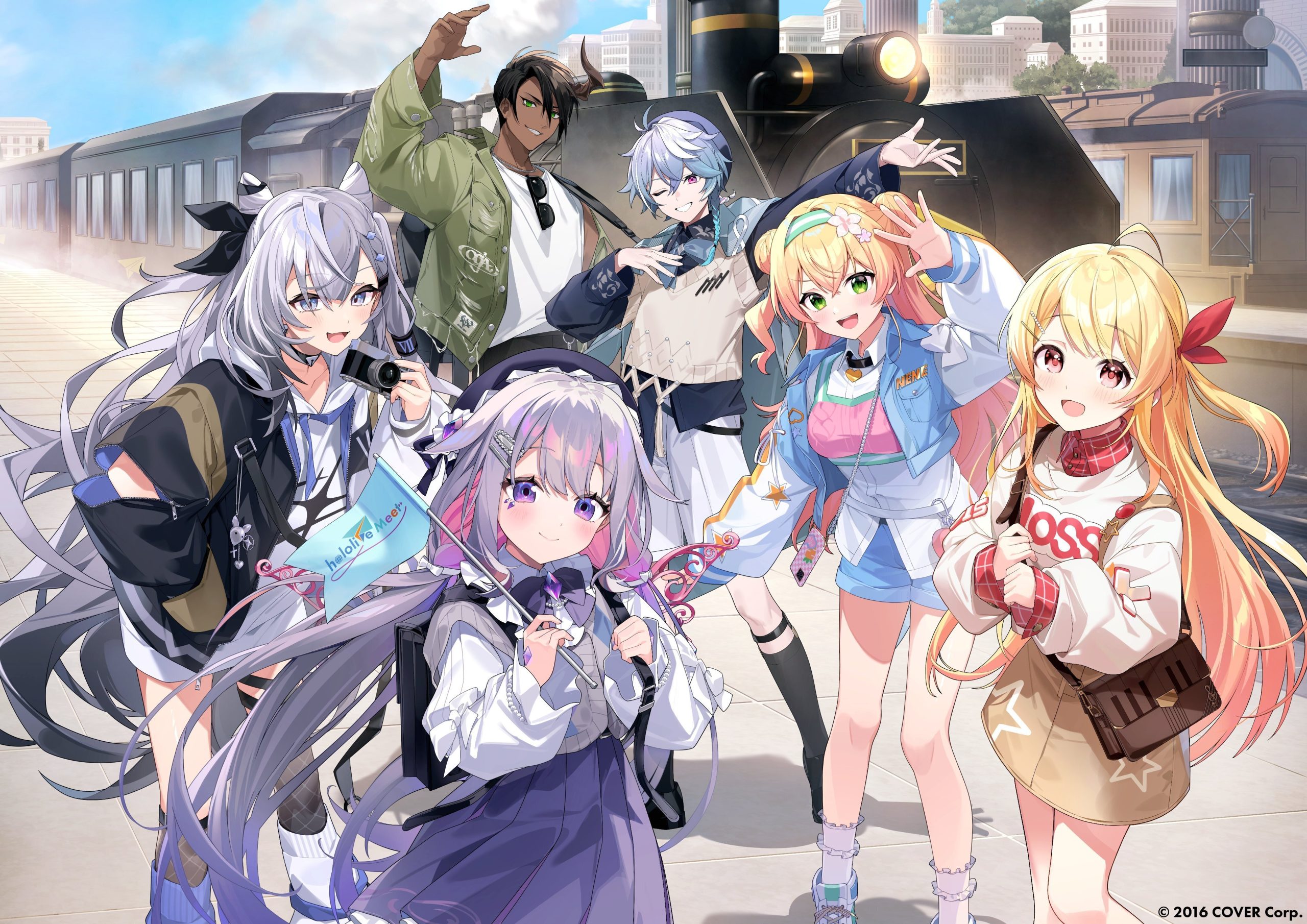 | 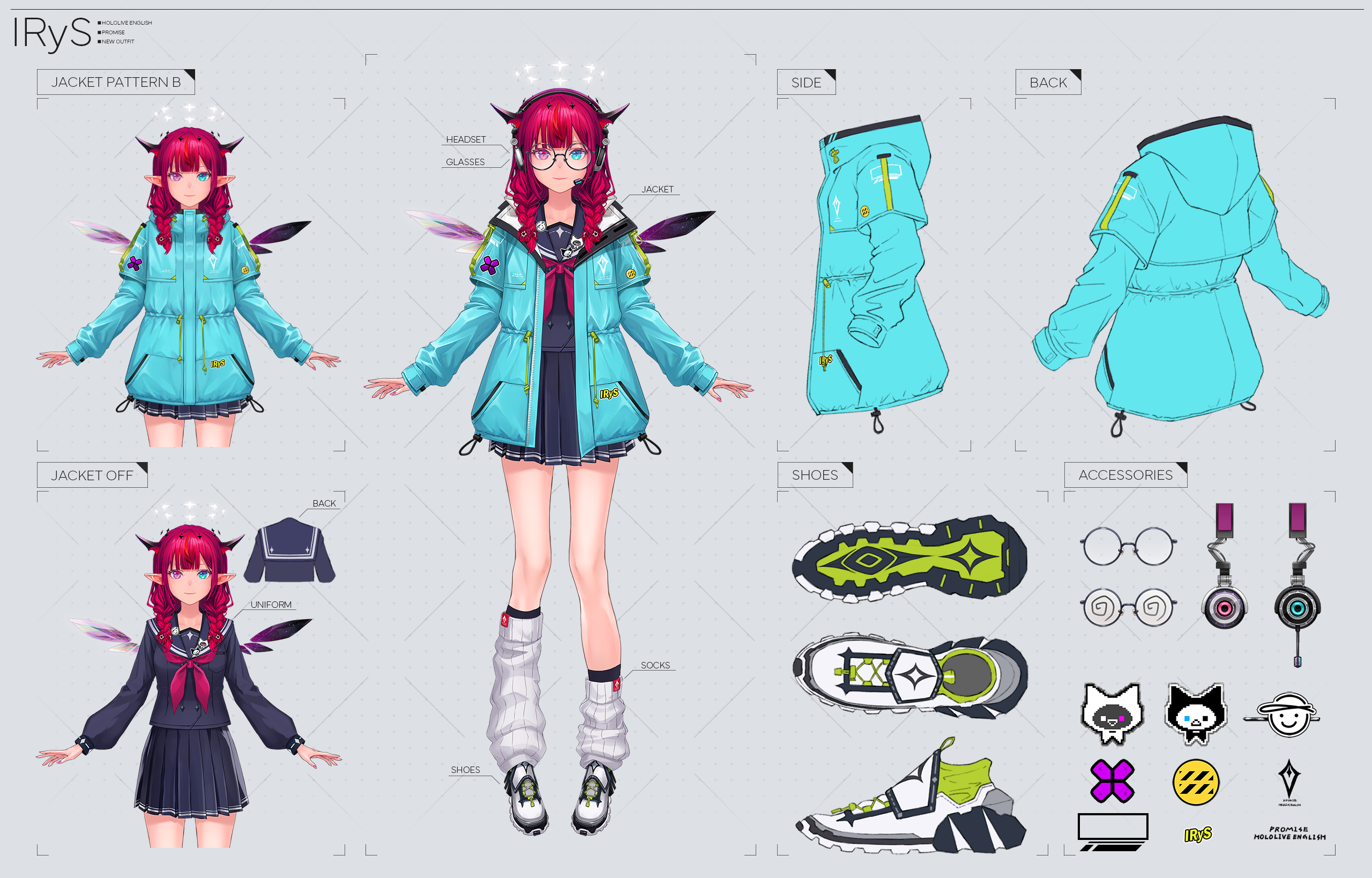 |
ー We’ve also seen 3D live performances utilizing Unreal Engine. How does your team approach the research and development of new technologies and methods of expression?
Are there particular areas of technology you’ve been paying close attention to recently?
When it comes to new technologies and research, we place a strong focus on pursuing greater “realness” – helping VTubers feel more naturally connected to the real world and enhancing their sense of presence. One example of this is the introduction of Unreal Engine. Up until now, we’ve primarily used Unity for our streams, but we’re actively exploring new ways to deliver even more sophisticated expressions and richer experiences.
We are also continuing to enhance our live performances with in-person audiences using Unity. As part of these efforts, we have developed a live performance-specific SDK (*1) to improve how we portray light and shadow, as well as Toon Shader (*2) specifically developed to enhance character expression, allowing for unique stylistic visuals.
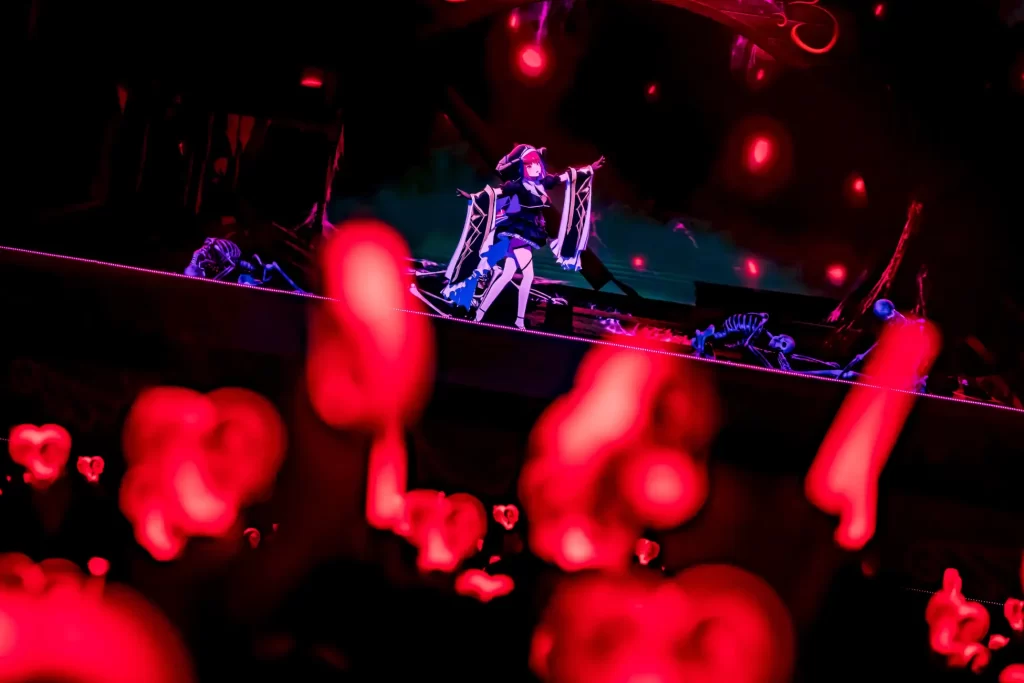
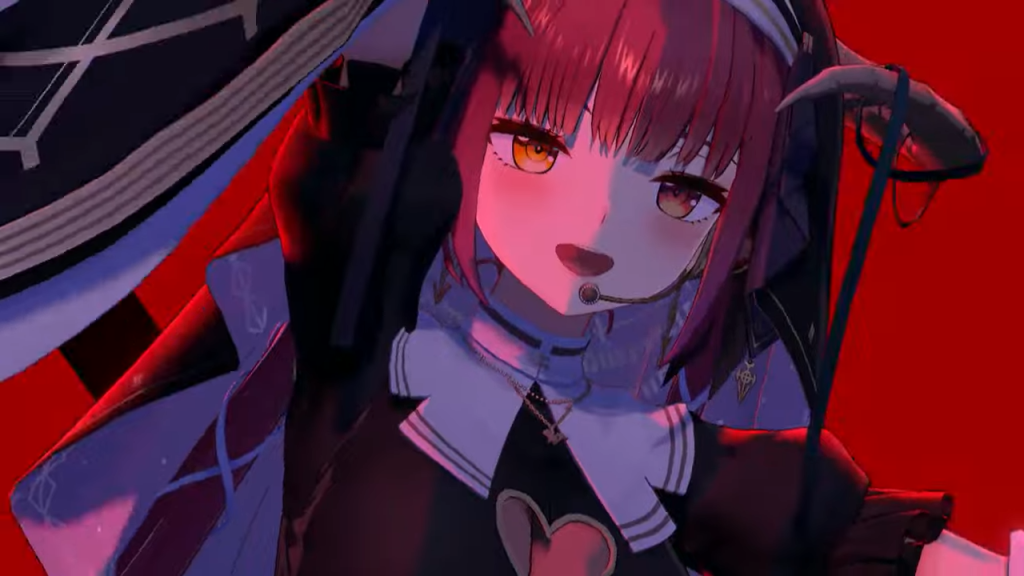
At Houshou Marine’s solo live performance in December, we were able to enhance both her performance and visual presentation by using these technologies and tools. We also provided technical support behind the scenes for her post-live review stream on VRChat.
In terms of future initiatives, we are focusing on improving operational efficiency through AI technologies and investigating the potential of markerless motion capture systems.
*1 SDK stands for Software Development Kit, a package containing tools, libraries, and sample code necessary for software development.
*2 Toon Shader is a tool that gives 3D models the appearance of hand-drawn 2D animation through distinctive shading.
ー What kind of projects are you planning to undertake using Unreal Engine?
We first used Unreal Engine during the ReGLOSS 3D LIVE Sakura Mirage performance held on March 30, 2025. It was a challenging initiative, carried out as a completely in-house project by our COVER studio.
This project was designed to use the strengths of Unreal Engine to achieve higher quality expressions that were difficult to create with Unity and to bring out even more of the talents’ appeal.
We used individual tuning to blend anime-style character expressions with a photorealistic world and incorporated real-time features such as changes in time and weather, and enhanced physics simulations – all of which are implemented live during the performance.
We are also challenging ourselves to create a new generation of live performances by simulating realistic lighting and atmosphere, designing immersive environments, using ray tracing to achieve highly precise visual expressions of light and developing a crowd system to capture the live energy and scale that audiences bring to a performance
At our in-house studio, we are using the latest flagship model of motion capture camera from VICON, the VALKYRIE VK26, which enables multi-person and 10-finger tracking. The studio is also equipped with a storage facility for props and set pieces, allowing us to support a wide variety of live scenarios. With the addition of PA and sound staff, we believe we were able to deliver a truly authentic live experience. Based on the audience feedback, we are already feeling a strong sense of accomplishment from the results.
ー Could you tell us about a project handled by the Creative Production Department that left a strong impression on you, and any problems you encountered during the project?
The most memorable project for me has been the establishment and operation of our large-scale COVER studio complex. When I joined the company, construction was already underway, but because speed was the priority, there were some challenges – such as insufficient power causing equipment malfunctions, and the fact that only one or two of the six large studios being built could be operated at the time. I was particularly impressed by the efforts we made to stabilize operations at the studio, which had a total construction cost of 2.7 billion yen, as we built up production efforts one step at a time.
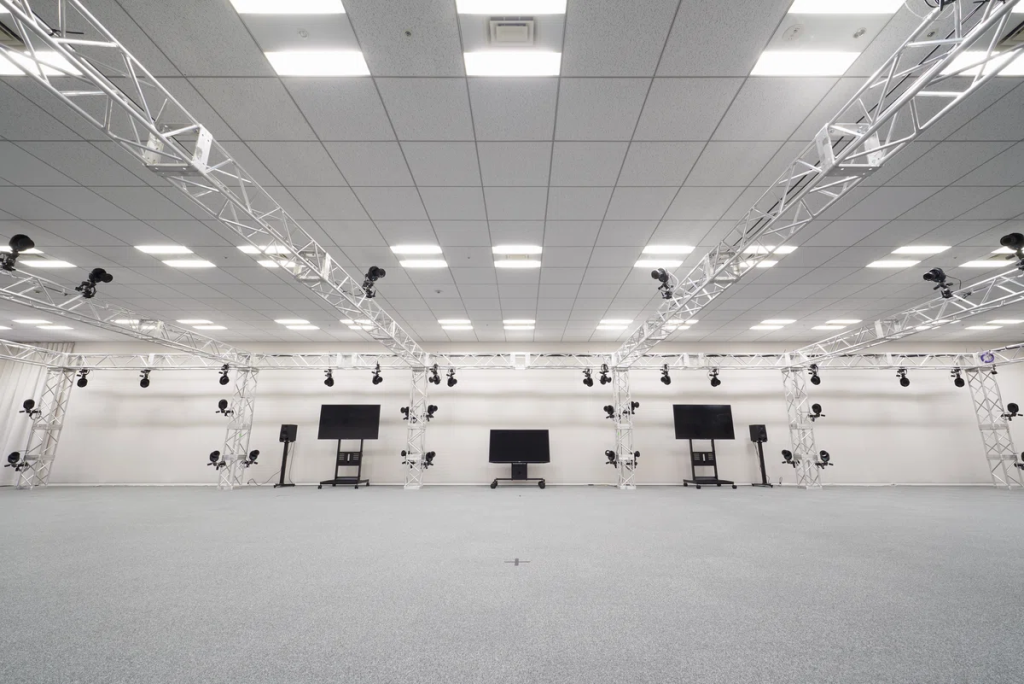
To address these challenges, we strengthened project management functions and increased mid-career hiring efforts, to attract more studio staff in particular. Recently, we’ve seen an increase in staff with experience in entertainment production sites, which has contributed significantly to boosting both our technical capabilities and overall production capacity.
Currently, our studio maintains an operational rate of over 80% at all times, and we are consistently operating at a high capacity, but one of the biggest challenges we face is balancing the increasing volume of work with maintaining and improving quality. While there are labor management issues unique to the entertainment industry, such as the growth of demand, the projects we take on become more ambitious and expectations, so maintaining the right balance has become even more critical.
From console games to VTubers: building a career in a rapidly changing industry
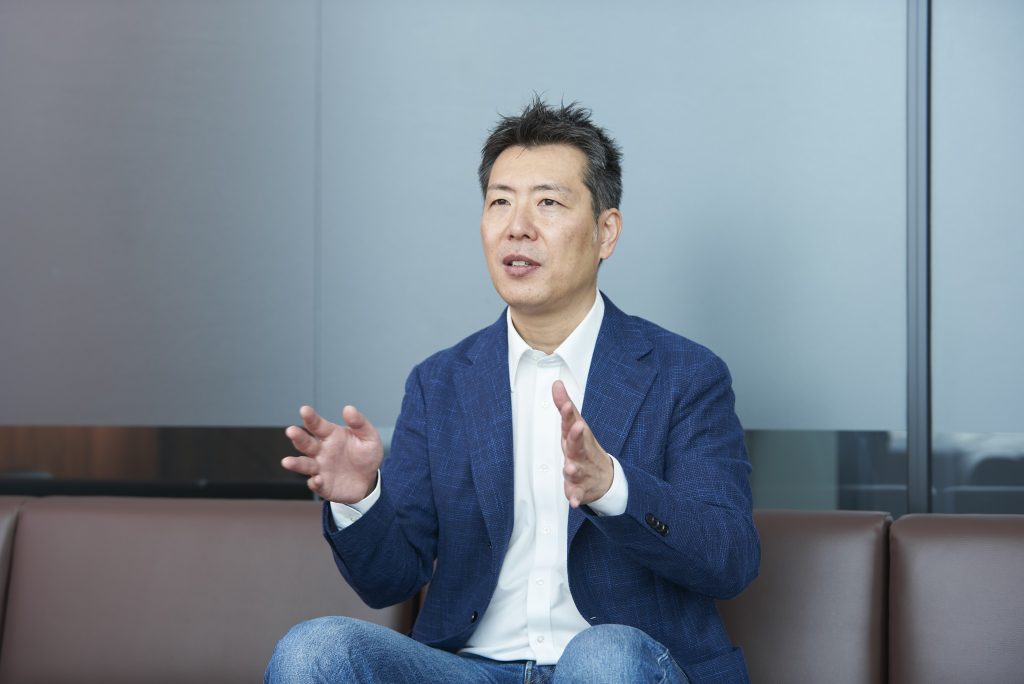
ー Could you tell us about your career path leading up to you joining COVER?
I started my career in 1998, joining Konami Digital Entertainment Co., Ltd. as a designer. In the first few years, I worked on pixel art and 2D illustrations, and from around 2000, I transitioned into 3D CG work, gaining experience by creating stadiums for baseball games.
Around 2007-08 I moved into a management position where I had the opportunity to be involved in a wide range of projects, and the valuable experiences I gained during that time have become a major asset in my career. In 2017, I joined Colopl, Inc. as a manager overseeing the art organization, responsible for managing around 200 designers – including illustrators, 3D artists, and graphic designers – and involved in project-based coordination and talent development. In 2022, I was approached by an agent and was given the opportunity to join COVER as the Head of the Creative Production Department. In 2025, I was appointed as a Senior Vice President, which brings me to where I am today.
ー What made you decide to join COVER?
The digital entertainment world is in a state of constant evolution, with trends and technologies shifting faster than ever.
Around 2010, social games and mobile game apps began to emerge, and the industry that had been focused on creating console games for platforms like PlayStation suddenly found itself competing with the internet industry. The competition with entertainment companies rooted in IT brought major changes to the industry. I later moved into the social game sector myself, but in recent years, the mobile game market has also entered a period of maturity. Although the industry is now more stable, it feels increasingly challenging to create new content.
In the midst of all this, the VTuber industry felt like an exciting new frontier for me. I saw it as a new form of entertainment that utilizes illustrations and 3D models, and also as a field where I could further advance my own career. What I found especially fascinating was that VTubers aren’t just avatar characters – they exist as real streamers who are passionately supported by their fans.
Since joining COVER, every day has been incredibly exciting, filled with fresh surprises and thrilling experiences, especially because this was a completely new industry for me. I feel a strong sense of fulfillment in being able to create new forms of value that haven’t existed before. Looking ahead, I believe that as real-world content and virtual space expressions become even more integrated, we’ll be able to create even more exciting developments.
Building COVER’s future on a foundation of respect for creators
ー What kinds of staff members are most common within the Creative Production Department?
Could you also tell us about the unique culture of the department?
One of the defining characteristics of our team is that many members are genuine fans of VTubers and hololive. A lot of them are also involved in creative activities in their personal time, which contributes to improving their skills so to support this, the company allows side jobs within certain guidelines. There’s also strong interest in emerging technologies, and we place a high value on maintaining a culture that encourages taking on challenges without fear of failure.
In terms of our department’s culture, while many members come from hands-on creative backgrounds, we also have a significant number of members with strong business experience, particularly in project management and production coordination. This helps keep the team balanced and running smoothly.
Many of our most outstanding members are highly proactive and possess strong communication skills. We also have a team full of people who are passionate about being technically curious in regards to new business domains. Our goal is to build an organization where each individual can further hone their expertise by creating an environment that allows them to fully commit to the craft of creation.
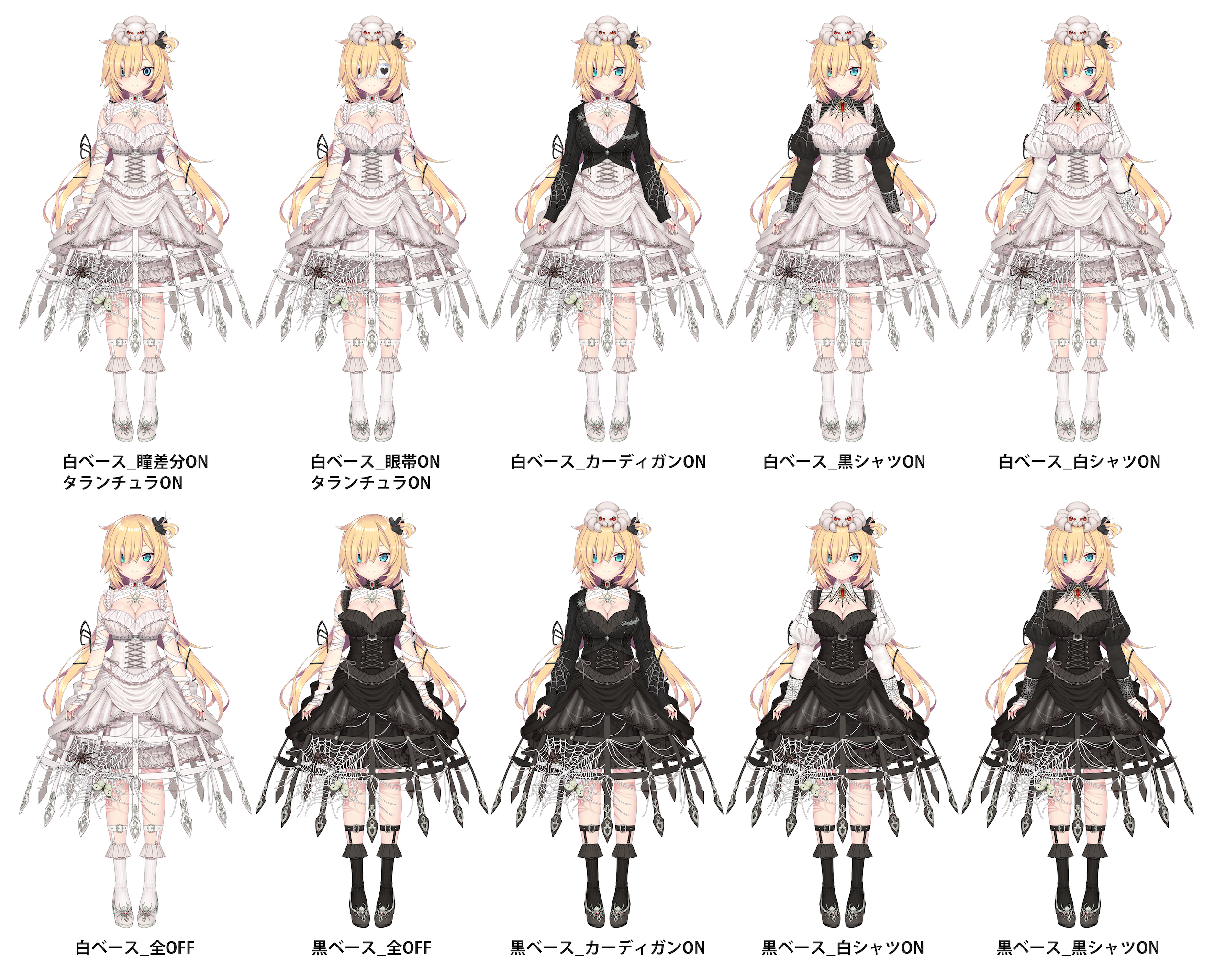 |  |  |
ー As the Creative Production Department, what do you consider most important when it comes to communication and the creative process?
In the production space, we place great importance on avoiding considering our work as merely routine. We emphasize approaching each project with care and passion, while encouraging the proposition of new ideas and taking on fresh challenges.
We treat everything we create like we would our own children, which is why we’re so committed to never compromising throughout the production process.
When it comes to communication, maintaining a sense of mutual respect is essential. There are times when there are clashes in opinions, but that’s only natural when you have a team of highly skilled creators with diverse expertise. I believe it’s important to guide those differences in a positive direction and turn them into strengths.
ー Could you share your vision for the future of the Creative Production Department, as well as the goals you hope to achieve?
We aim to further improve quality from both a creative and technical standpoint, so that we can help share VTuber culture with an even broader global audience in mind. Nothing is more exciting than helping new stars make their debut.
We are also committed to strengthening our support for overseas talents more than ever before. Since some talents face difficulties traveling to Japan, we are actively proposing projects that utilize VRChat and providing as much support as possible through online initiatives.
For example, as I mentioned, we are actively working to introduce technologies like markerless motion capture, which enable high-quality streaming regardless of location, and every day, we continue to explore new ways to better support our overseas talents as we work toward achieving the company’s mission.
Because creative tastes can differ greatly depending on the region and culture, we’re aiming to work more closely with overseas creators going forward, but with that said, we remain firmly committed to our core mission of sharing Japanese culture with the world. As we expand globally, we are carefully trying to preserve the distinct Japanese nature of our content when localizing it for other regions.
ー Lastly, how would you describe COVER in one word or phrase?
I would probably say “respect for creators”. That respect extends to not only our talents but to everyone involved in the creative processes that support them.
While our business model is B2B2C, I feel that what truly shapes our world is the combined energy of all forms of creativity – from the works produced by our creators to the fan-driven derivative works that add even more excitement. In that sense, our identity is built on respect for everyone involved in creation – talents, illustrators, 3D CG artists, fans, and beyond. Valuing all of them is, I believe, the most authentic representation of who we are as a company.
ー The Creative Production Department has grown into a creative organization of over 300 members. By bringing together creators with diverse expertise, the team is taking on the challenge of shaping the next generation of VTuber expression. Through our conversation with Hayashi Senior Vice President, we truly felt the passion at the heart of the production side of the company – from forming a production structure that prioritizes speed as well as quality to the development of next-generation live performances, all aimed at creating new forms of entertainment. Thank you very much!
*Unreal Engine is a trademark or registered trademark of Epic Games, Inc. in the United States and other countries.
Recruitment site
役員インタビュー一覧
-
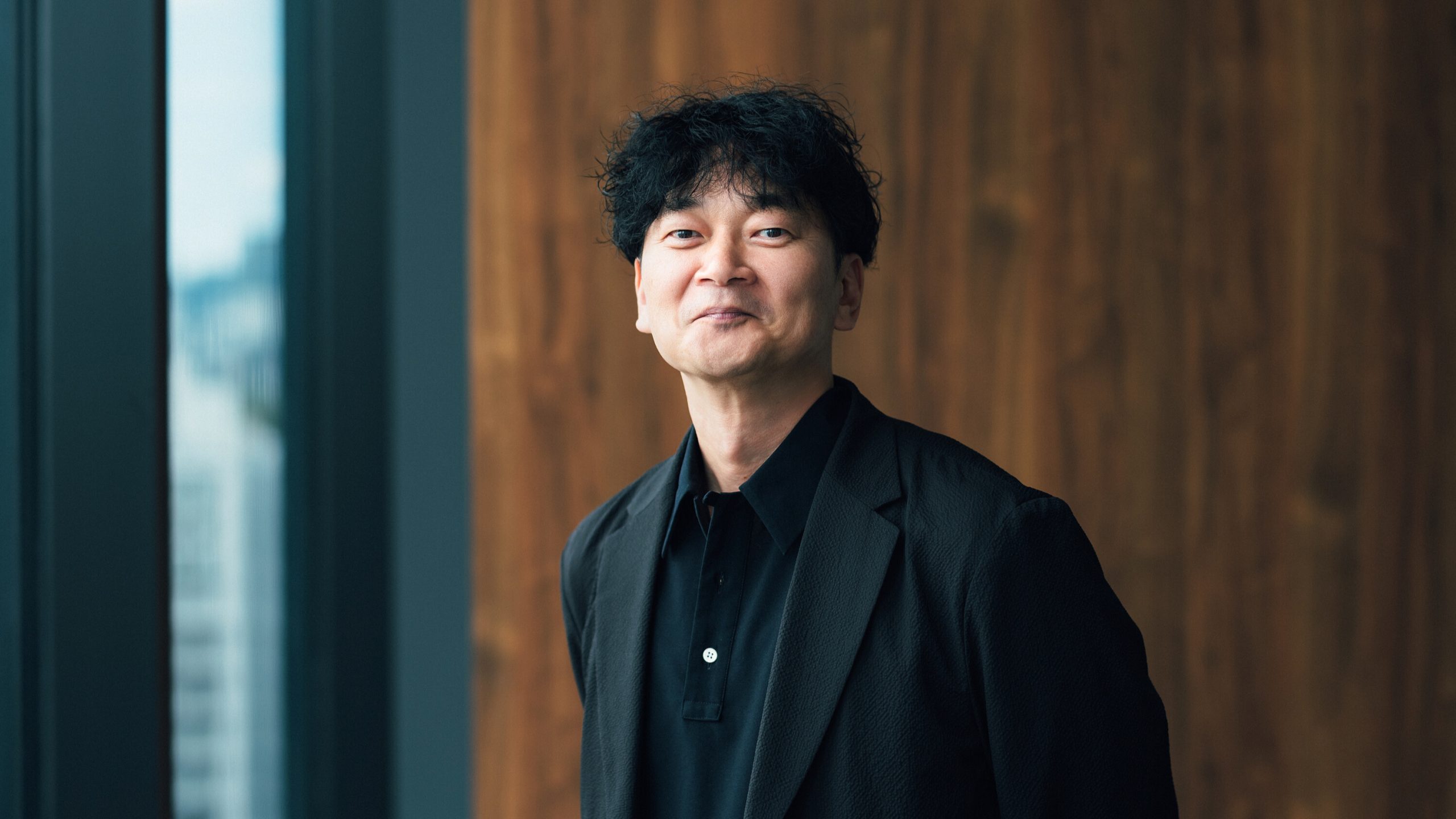
カバー取締役・植田修平が語る、世界のコンテンツ産業に不可欠な存在への挑戦
メディアミックス領域を管掌する取締役の植田修平さんに、VTuber市場の未来、海外展開戦略、そして業界が抱える本質的な課題について、詳しく伺いました。
記事を読む
-
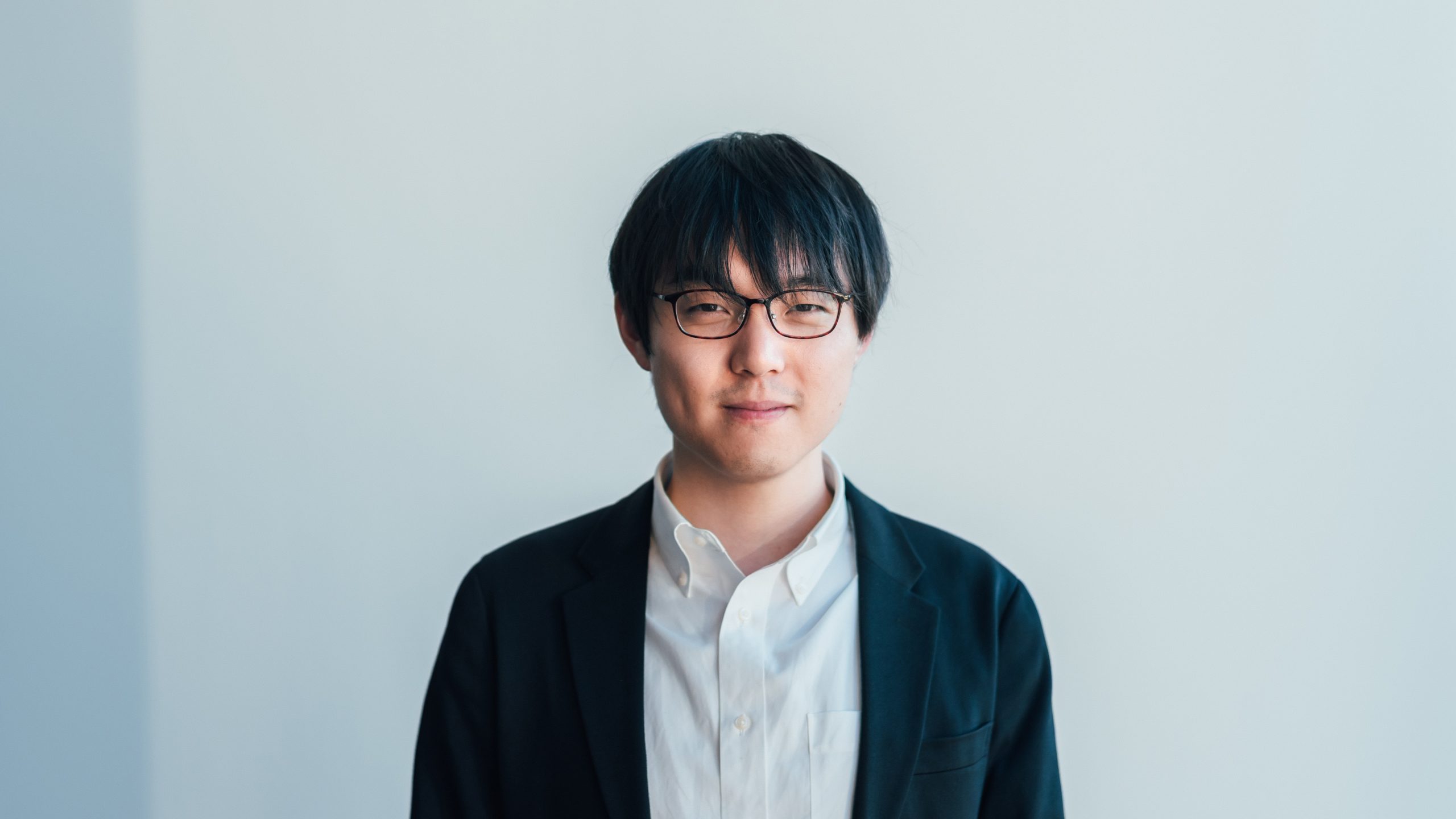
「クリエイターの夢を管理部門から支える」カバー執行役員が描く、挑戦を後押しする組織づくりへの挑戦
執行役員 人事/法務知財・危機管理本部長の加藤卓さんに持続可能な組織づくりを目指す取り組みについて、詳しく伺いました。
記事を読む
-

「多彩な専門性で描くVTuberの未来」カバー林執行役員が語る、クリエイティブ制作本部が挑む表現革新への道のり
VTuberプロダクション領域を管掌する執行役員の林茂樹さんに、新しいエンターテインメントの創造に挑む制作現場について、詳しく伺いました。
記事を読む
-
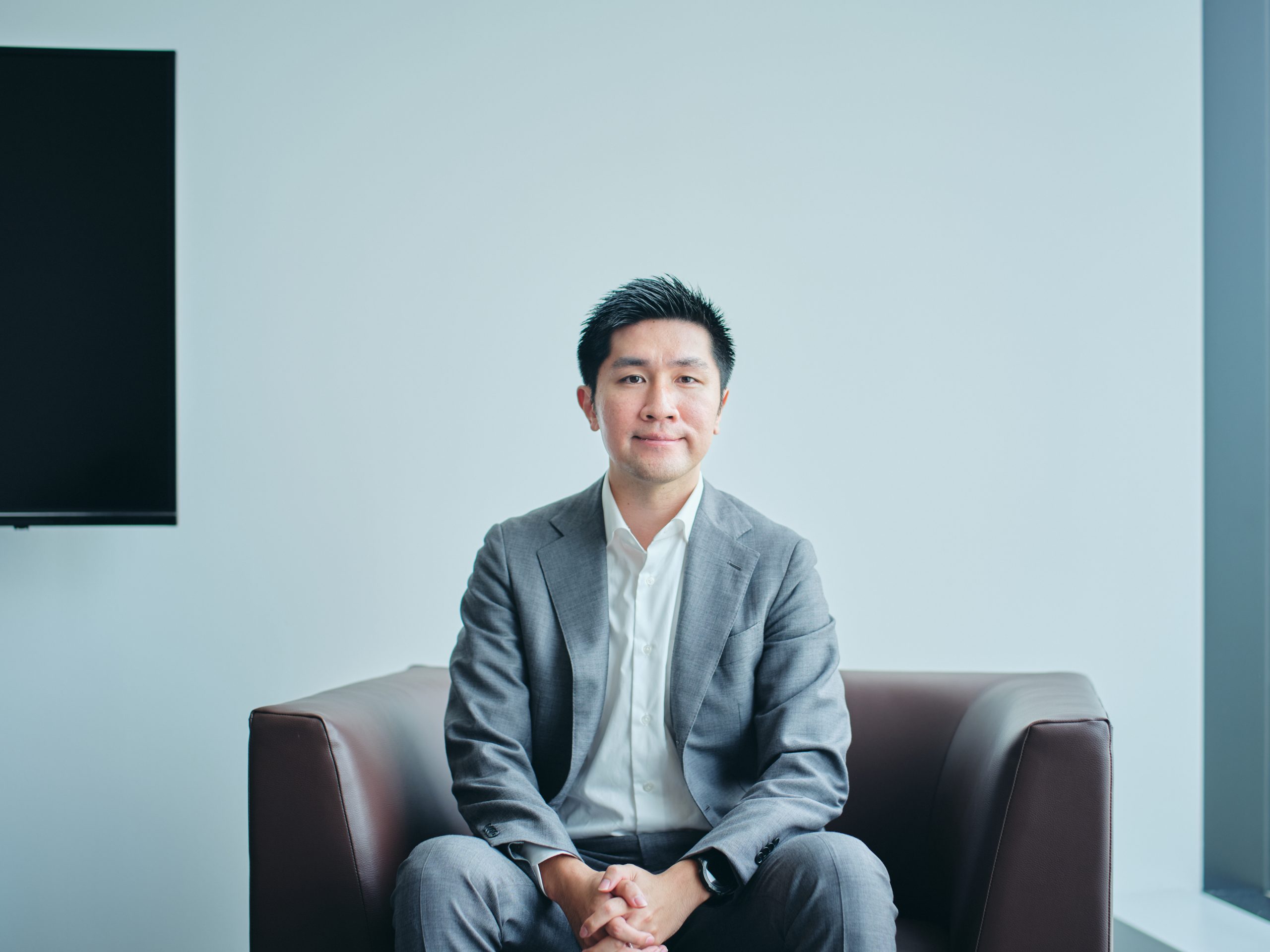
「一過性のブームではない、10年先を見据えたビジネスへ」カバーCFOが描く、VTuber産業の可能性と展望
取締役CFOの金子陽亮さんに、カバーの成長戦略や将来展望について詳しく伺いました。
記事を読む
-
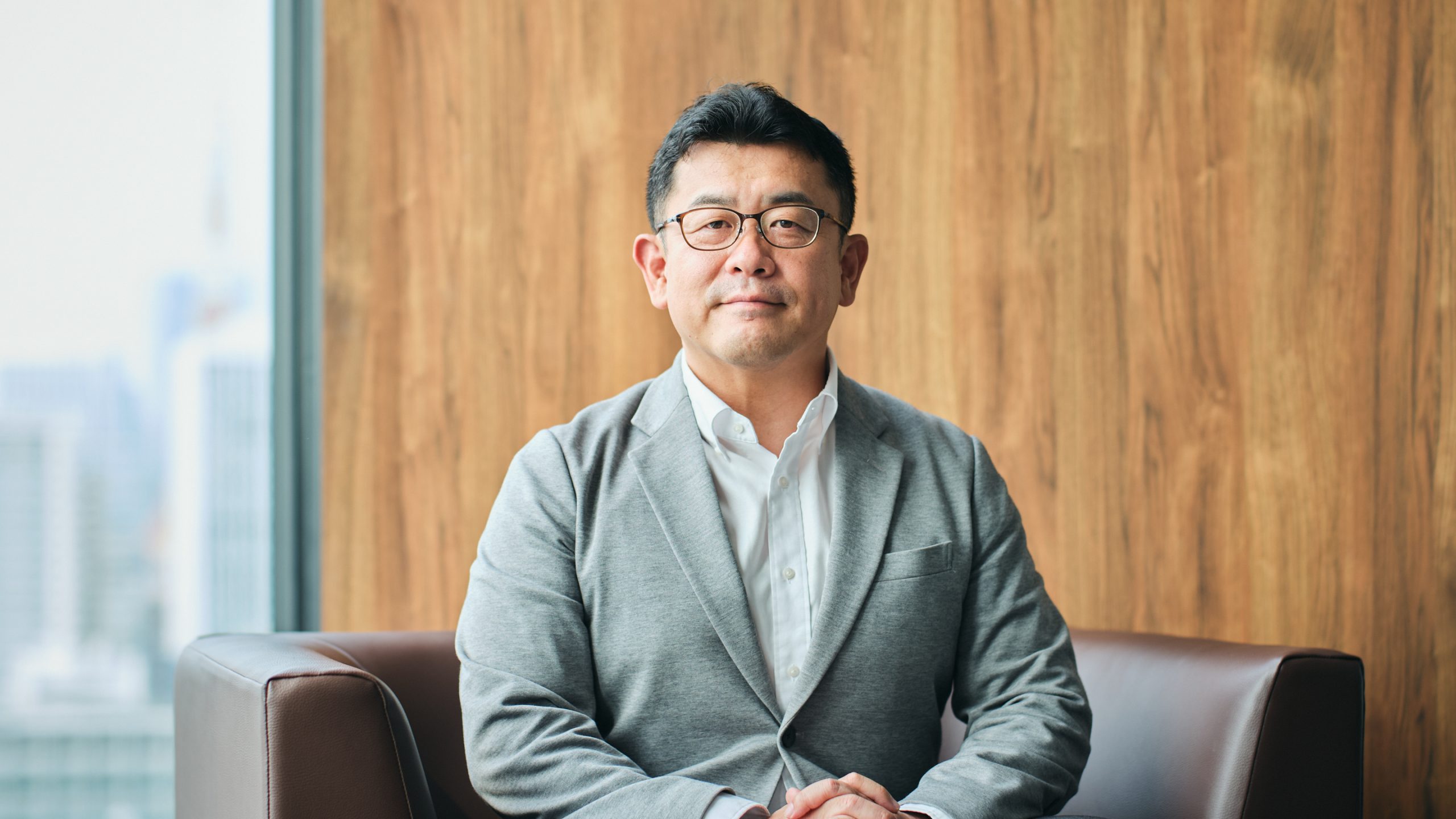
「日本発コンテンツを世界に届けたい」カバー前田執行役員が明かす、グローバル展開への挑戦と展望
MD・EC・物流領域を管掌する執行役員の前田大輔さんに、カバーのEC戦略と未来のビジョンについて詳しく伺いました。
記事を読む
-
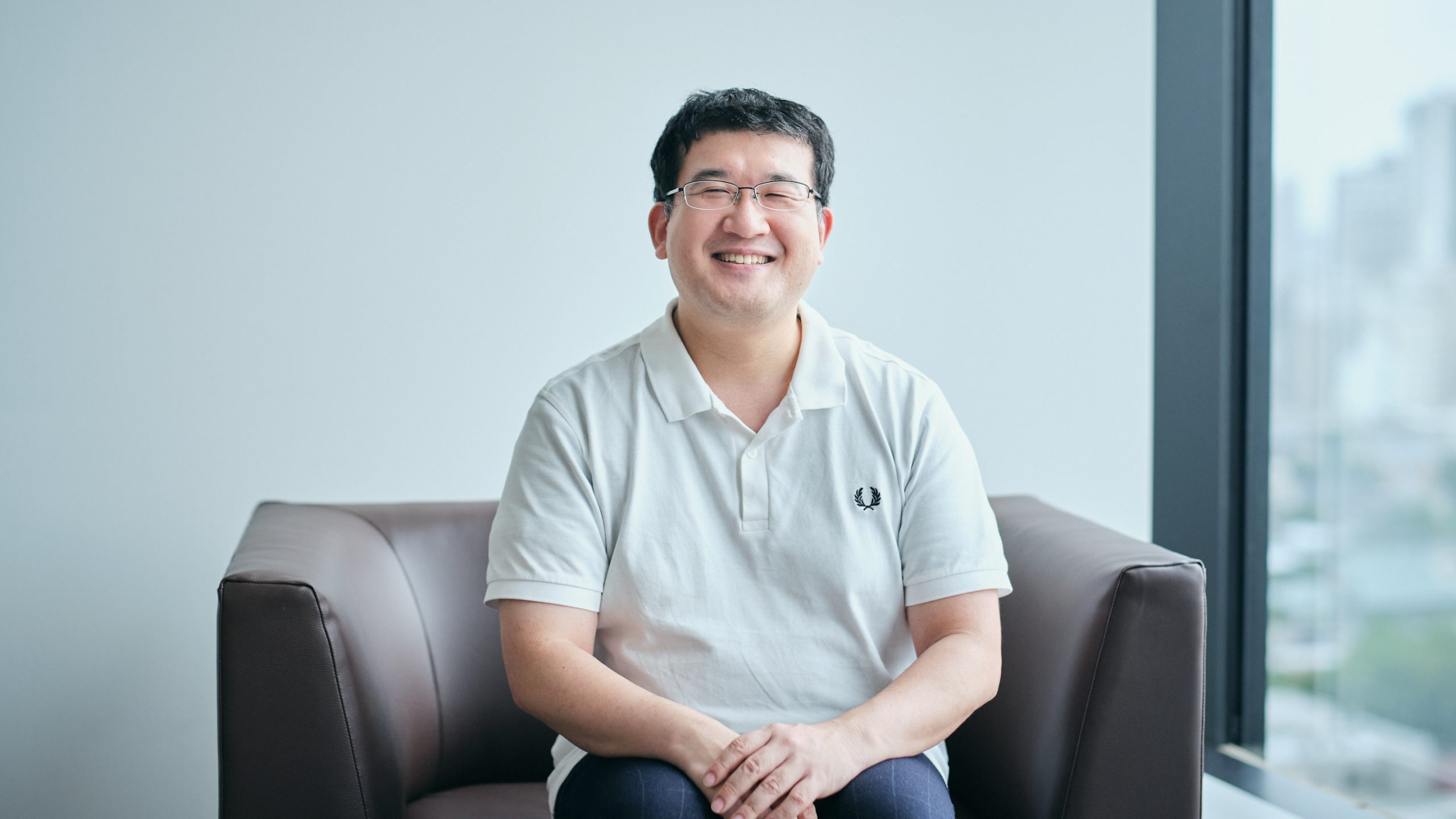
「テクノロジーで世界を縮める」カバー取締役CTOが語る、VTuberからホロアースまでの技術革新と未来像
カバー創業期から技術戦略を牽引してきた福田一行CTOに、技術革新を続けるカバーの技術戦略や、新しいエンターテインメントの未来を創造する挑戦について、詳しく伺いました。
記事を読む
-
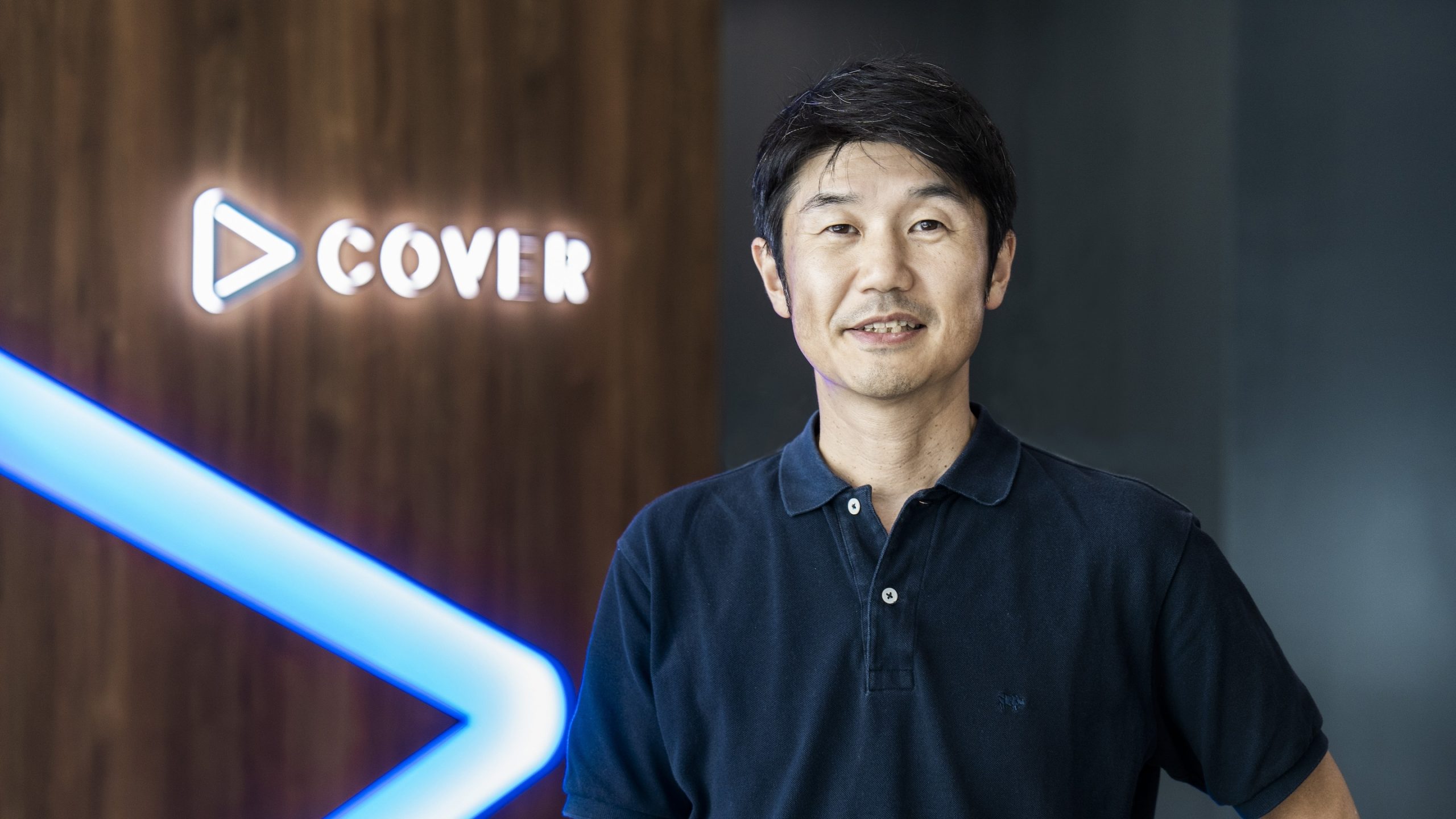
「日本発で世界に向けてエンターテイメントで突き抜ける」カバー谷郷社長が描く、VTuber文化とテクノロジーが拓く未来
代表取締役社長CEO 谷郷 元昭に、「第二創業期」を迎えたカバーが目指す「より大きなチャレンジ」の全容について迫りました。
記事を読む


